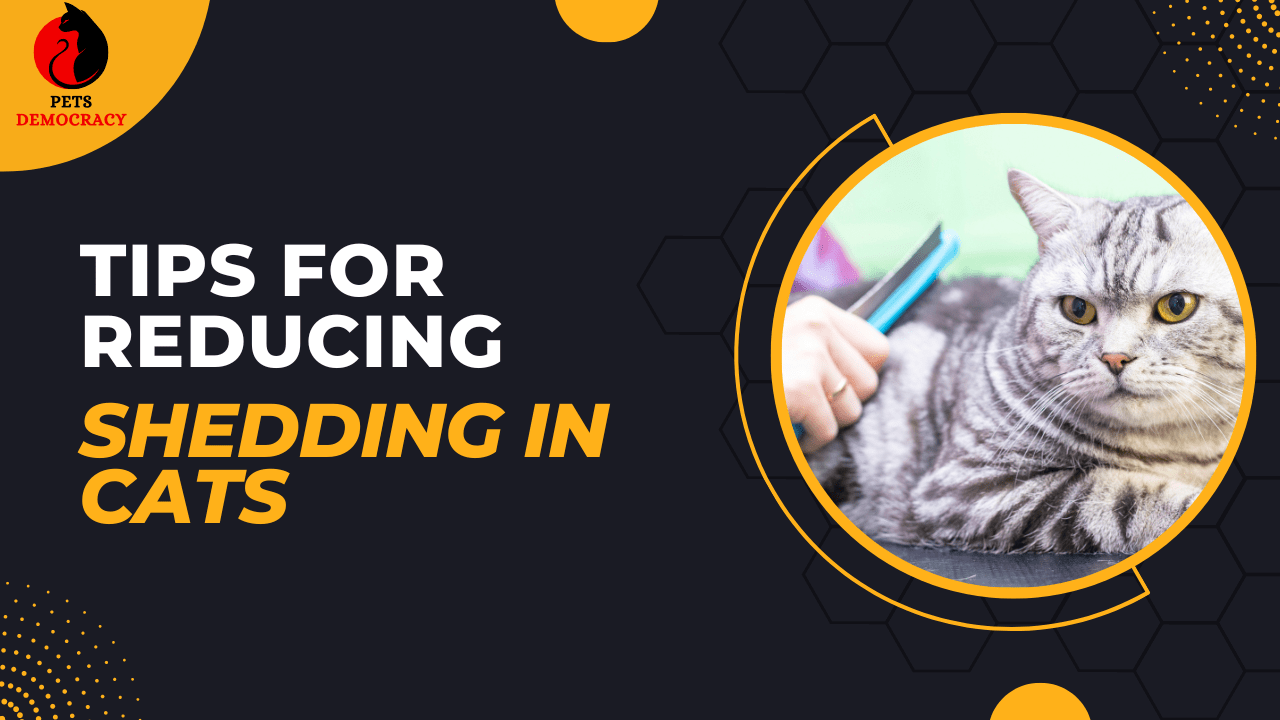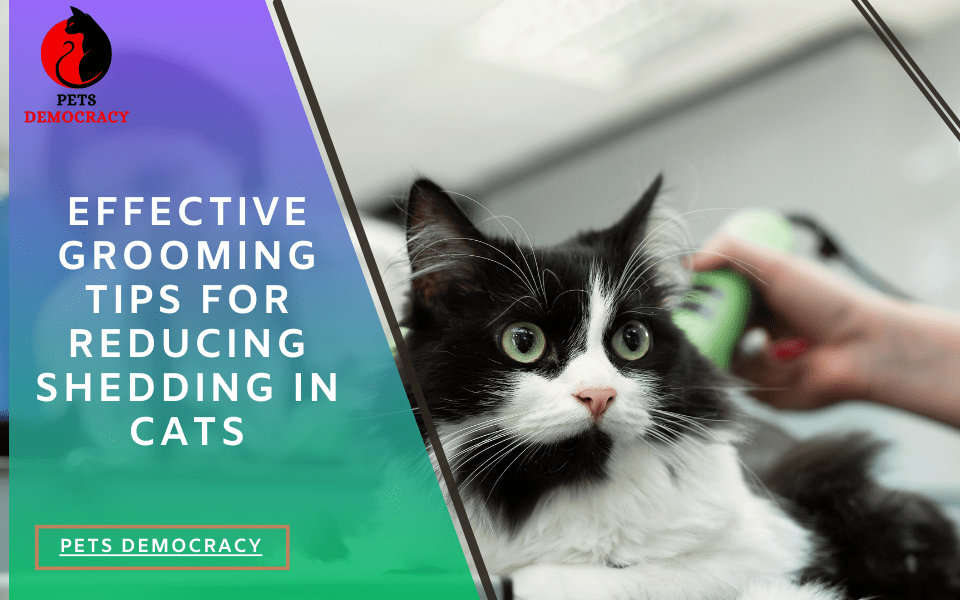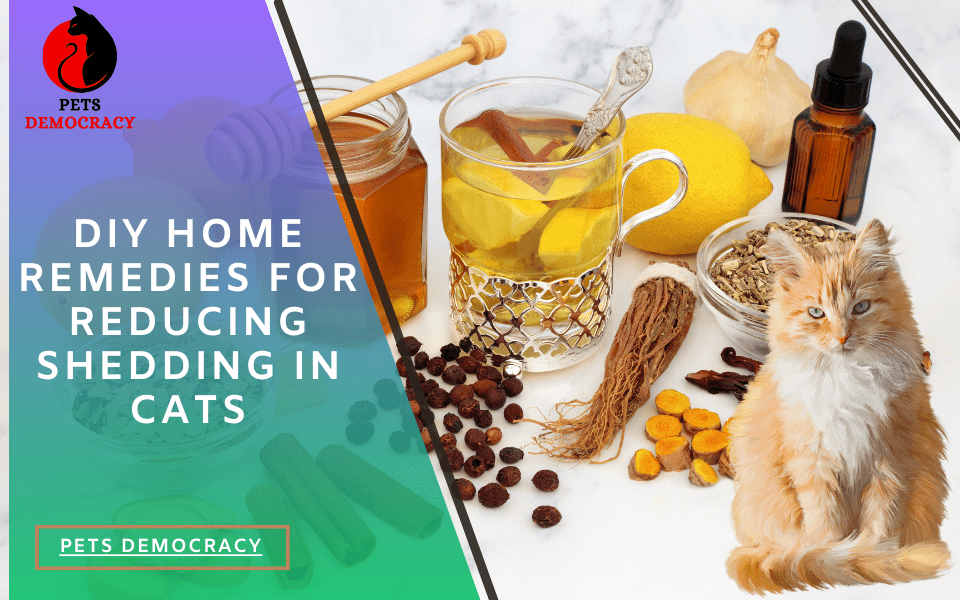
This comprehensive guide will explore effective tips and strategies for reducing shedding in cats, covering grooming techniques, dietary adjustments, environmental changes, and more.
Cats are wonderful companions, but dealing with their shedding can be a challenge. Understanding how to manage and reduce shedding in cats keeps your home cleaner and ensures your feline friend’s health and comfort.
Understanding the Causes of Shedding in Cats
Before diving into the tips for reducing shedding in cats, it’s important to understand why cats shed. Cats naturally lose their damaged or old hair during a process called shedding.
This process varies depending on the breed, age, diet, and overall health of the cat. Some common reasons for shedding include:
- Seasonal Changes: Cats tend to shed more during spring and fall when they adapt to changing temperatures.
- Health Issues: Conditions like allergies, infections, or skin problems can cause excessive shedding.
- Poor Diet: A lack of essential nutrients can lead to dry skin and excessive fur loss.
- Stress and Anxiety: Cats often shed more when they are stressed or anxious.
Effective Grooming Tips for Reducing Shedding in Cats

Regular Brushing: The Key to Reducing Shedding in Cats
Regular brushing is one of the most effective methods for reducing shedding in cats. It helps remove loose fur before it falls off and spreads around your home. Here are some brushing tips:
- Choose the Right Brush: Depending on your cat’s fur length, you might need a slicker brush, bristle brush, or a grooming glove.
- Brush Gently but Thoroughly: Make sure to brush in the direction of the hair growth to avoid causing discomfort.
- Establish a Routine: Aim to brush your cat at least once a week. Long-haired breeds might need daily brushing.
Bathing Your Cat to Reduce Shedding
While not all cats enjoy baths, occasional bathing can help reduce shedding by removing loose fur and dirt. Use a cat-specific shampoo that nourishes the skin and fur.
- Use Lukewarm Water: Ensure the water is comfortable to avoid stressing your cat.
- Be Gentle: Gently massage the shampoo into your cat’s fur, avoiding the face and ears.
- Thorough Rinse: Make sure all shampoo is rinsed out to prevent skin irritation.
Dietary Adjustments for Reducing Shedding in Cats
High-Quality Diet: Essential for Reducing Shedding in Cats
A high-quality diet rich in essential nutrients can significantly reduce shedding. Look for cat food that includes:
- Omega-3 and Omega-6 Fatty Acids: These promote healthy skin and a shiny coat.
- Protein: Essential for overall health and fur growth.
- Vitamins and Minerals: Ensure your cat’s diet includes sufficient vitamins A, E, and B, as well as zinc and biotin.
Hydration: Crucial for a Healthy Coat
Proper hydration is often overlooked but is crucial for reducing shedding in cats. Make sure your cat always has access to clean water. They can drink more water if they eat wet cat food.
Environmental Changes to Reduce Shedding in Cats
Maintaining a Clean Living Space
A clean environment can help manage shedding. Regularly vacuum your home, including furniture and areas where your cat likes to rest. Use a vacuum with a HEPA filter to capture pet dander and fur effectively.
Using Air Purifiers
Air purifiers can help reduce airborne pet dander and fur, improving air quality and reducing allergens.
Health Check-Ups and Shedding
Regular Vet Visits: Essential for Reducing Shedding in Cats
For you to keep an eye on your cat’s health, routine veterinary examinations are essential. Vets can identify underlying health issues that might contribute to excessive shedding and provide appropriate treatments.
Managing Stress and Anxiety
When a cat is nervous or stressed, they may shed more. Make your cat’s environment peaceful and secure. Use pheromone diffusers, provide plenty of toys, and establish a consistent routine to help reduce their stress levels.
DIY Home Remedies for Reducing Shedding in Cats

Coconut Oil: A Natural Remedy
Coconut oil can improve your cat’s coat and reduce shedding. Add a small amount to their food or apply it directly to their fur. Always get advice from your veterinarian before starting any new supplements.
Olive Oil for Shedding Reduction
Olive oil is another natural remedy that can help reduce shedding. A teaspoon of olive oil added to your cat’s food once a week can improve their coat’s condition.
Common Mistakes to Avoid When Reducing Shedding in Cats
Over-Bathing
Frequent bathing can strip your cat’s fur of natural oils, leading to dry skin and more shedding. Stick to occasional baths unless otherwise advised by your vet.
Ignoring Health Issues
Don’t overlook potential health issues that might cause excessive shedding. Regular vet visits and prompt attention to any signs of illness are crucial.
Using the Wrong Grooming Tools
Using the wrong grooming tools can cause discomfort and even harm your cat’s skin. Ensure you are using the appropriate brush or comb for your cat’s fur type.
FAQs about Reducing Shedding in Cats
What is the best brush for reducing shedding in cats?
The type of fur on your cat determines which brush is ideal. Slicker brushes are great for long-haired cats, while bristle brushes work well for short-haired breeds. Grooming gloves can be useful for all fur types and provide a gentle massaging effect.
How often should I brush my cat to reduce shedding?
For short-haired cats, brushing once a week is usually sufficient. Long-haired cats may require daily brushing to manage shedding effectively.
Can diet really affect my cat’s shedding?
Yes, a balanced diet rich in essential nutrients like omega-3 and omega-6 fatty acids, protein, and vitamins can significantly improve your cat’s coat health and reduce shedding.
Are there any supplements that help with shedding?
Supplements like fish oil or omega-3 capsules can help reduce shedding by improving skin and coat health. Always consult your vet before adding any supplements to your cat’s diet.
Is it normal for cats to shed a lot?
Some shedding is normal, especially during seasonal changes. However, excessive shedding can indicate health issues, poor diet, or stress. If you’re concerned about your cat’s shedding, consult your vet.
How can I reduce shedding in my multi-cat household?
Ensure all cats have a balanced diet, regular grooming, and a stress-free environment. Using air purifiers and maintaining a clean home can also help manage shedding in a multi-cat household.
Conclusion
Reducing shedding in cats involves a combination of regular grooming, proper diet, environmental management, and attention to your cat’s overall health and well-being.
By implementing these tips, you can significantly reduce the amount of fur in your home and ensure your feline friend has a healthy, shiny coat.
Remember, patience and consistency are key. With the right approach, managing shedding in cats can become a manageable part of your routine.


